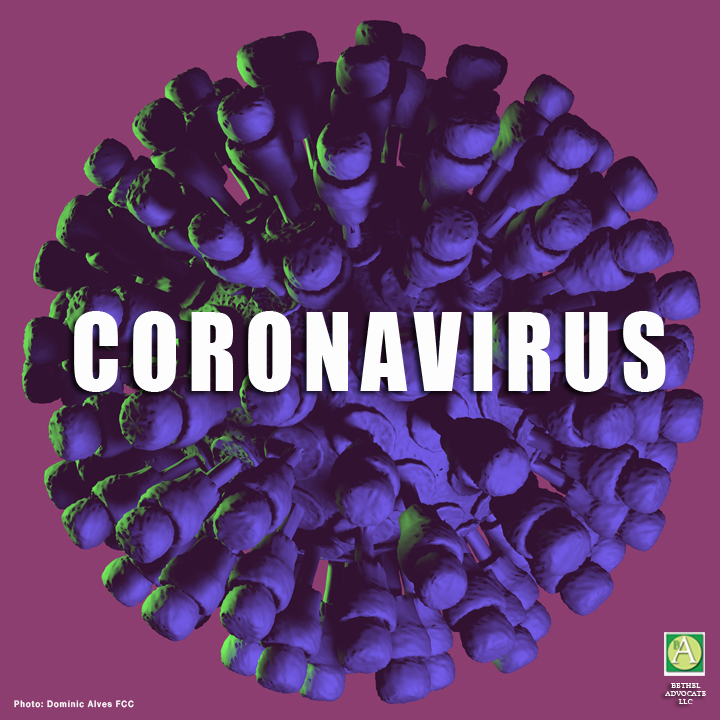
Report by Paula Antolini, March 6, 2020, 8:54AM EDT

The following Connecticut State Department of Education guidance today was sent to Superintendents and our Educational Partners to use as a planning tool in the event COVID-19 impacts CT school districts:
The Connecticut State Department of Education (CSDE) is providing the following reminders and updates in the event that Connecticut schools are impacted by COVID-19.
Prevention and General Information
Connecticut specific updates are available at https://portal.ct.gov/DPH/Public-Health-Preparedness/Main-Page/2019-Novel-Coronavirus, and updates from the Centers for Disease Control and Prevention (CDC) are found at https://www.cdc.gov/coronavirus/2019-ncov/index.html.
This guidance is not intended to be a checklist, but rather a set of broad guidelines for school superintendents to guide their contingency planning. The National School Boards Association provided guidance in checklist form at https://www.nsba.org/Resources/coronavirus/legal-guide.
Develop a strong communication plan to ensure students and staff are familiar with advice from experts related to prevention, including hand-washing and avoiding hugs and handshakes, etc. Schools should consider if it is necessary to shift internal policies to ensure staff and students have time to comply with the CDC guidance for prevention.
–For example, students and staff should be permitted time to regularly and effectively access soap and water and follow recommended guidelines for hand-washing – vigorously for at least 20 seconds. Districts should also review local policies (i.e., attendance, extra-curricular activities, and emergency management) to ensure they are consistent with advice related to COVID-19.
Prioritize speaking with students about the facts using a specific, age-appropriate approach. Strategies should be discussed with teachers and staff about handling students’ feelings of fear or worry about COVID-19.
Possible School Closures Due to COVID-19
At this time, school closures in Connecticut have not been directed by Federal and/or State officials. Should it become necessary to consider closing one or more schools, that decision will not be made in a silo. Absent an emergency declaration from theOffice of the Governor Federal government, school closures are local decisions made by the school district in coordination with and at the direction of the local health officials. Consultation with the State Department of Public Health and State Department of Education is also recommended.
To prepare, superintendents should review their School/District Safety and Security Plans, and plan with their local municipal health officials to coordinate communication should a decision about school closures be necessary. Contact information for local health departments and districts is available athttps://portal.ct.gov/DPH/Local-Health-Admin/LHA/Local-Health-Administration Site Map.
State law allows the Connecticut State Board of Education to authorize a shorter school year i.e., one with less than 180 days, where there are emergency circumstances. Schools should exhaust all other options to make up any lost school days. A local district’s request for consideration should be directed in writing to the Commissioner of Education. Such requests will be given consideration for approval by the State Board of Education on a case-by-case basis.
Continuity of Education
School closure does not have to mean a total loss of instructional/learning time. Therefore, the CSDE recommends that districts plan now to have some high quality, distance-learning opportunities that could be employed in the event of a school closure due to COVID-19.
Consider educational policy issues, legal input, special education considerations, and use an equity lens when making these plans. Distance learning may be differentiated depending on student access to technology or need for special resources, and teams should consider accommodations and other accessible materials.
Distance learning opportunities and preparation should include input from a multi-disciplinary team, including teachers. In designing these distance learning opportunities, please consider the following:
Approach
–Distance learning opportunities may be digitally based (e.g., online learning) and/or print-based (e.g., structured printed learning materials sent home in advance). These two approaches do not have to be
mutually exclusive.
–The extent to which a particular medium (digital and/or print) is used in the design of a learning opportunity will depend on the infrastructure available in the school community, especially 1:1 technology capacity and
internet access in the students’ homes.
–The nature of the learning opportunity may also differ based on the grade range. For example, online learning may be more feasible in the upper grades, while print-based learning materials may be more suitable in the
elementary grades.
Content
–The content of these learning opportunities is another consideration. For example, anticipate in advance the need to plan activities and materials that are not directly tied to the scope and sequence of the curriculum.
Developing general materials tied to grade-level learning expectations will allow flexibility depending on the timing of a potential closure.
–For additional support and technical assistance in creating such a “Distance Learning Plan” for your district, we encourage you to contact your Regional Educational Service Center (RESC).
Staff
–The CSDE strongly recommends that district leaders work in close partnership with their local unions in the design, development, and implementation of distance learning opportunities. The training and ongoing support of classroom teachers is vital to the effectiveness of such efforts.
–Should a school closure impact student teaching or clinical placements, the CSDE will work with Educator Preparation Programs to address program completion requirements.
Additional Reminders/Updates
Communication Plan with Parents, Guardians and other Community Stakeholders: Developing effective communication with parents, guardians, and other community stakeholders is of paramount importance.
Begin reviewing contact lists and engaging now. Keep in mind that families may need to consider alternative childcare options.
Review Attendance Policies and Plan for Absenteeism: School districts are encouraged to review and evaluate their attendance policies(e.g., rewards for perfect attendance) to ensure that they encourage ill students to stay home rather than feeling compelled to attend school. Districts must also consider and plan for absent students and staff, and implement an approach to minimize the impact on learning, such as cross training of staff.
State Summative Assessment: All state assessments offer either extended testing windows over several weeks (e.g., Smarter Balanced, NGSS) or multiple testing dates that are at least two weeks apart (e.g., SAT). If in spite
of this flexibility, state assessment administration in a district is hampered due to unavoidable school closures resulting from a COVID-19 outbreak, the CSDE will explore solutions that will enable the district to complete
administration of the mandated assessment(s).
Consider Supplies Needed and Perform Routine Environmental Cleaning: Schools districts are encouraged to continue with routine cleaning of all frequently touched surfaces in the workplace, such as workstations, countertops, and doorknobs. Use the cleaning agents that are usually used in these areas and follow the directions on the label. Make sure you have appropriate supplies available. Guidance regarding green cleaning
products and exceptions has been issued to Superintendents, confirming that in the context of COVID-19, green cleaning laws should not be misconstrued to limit compliance with the relevant CDC and/or DPH guidance.
School Nurses and/or Health Centers: Schools are not expected to screen students or staff to identify cases of COVID-19. School nurses and school medical advisors should be actively engaged in providing guidance on
preventative measures. If a school-based health professional has questions or concerns about COVID-19, they should discuss those with the local health department and follow their guidance.
Child Nutrition Services: Continuity of food services, particularly for our most vulnerable students and families, is another important consideration. During major outbreaks, the United States Department of Agriculture
(USDA) Child Nutrition Programs, including the National School Lunch and Breakfast Programs, may provide alternatives and allow waivers to certain requirements. Should this occur, the CSDE will issue guidance and instructions to school districts participating in these programs.
Combat Stigma and Discriminatory Behaviors: As new information emerges, please remind your community sharing rumors and misinformation connecting the risk of COVID-19 to any race, ethnicity, or nationality or any other protected class has no place in our schools, and may violate state law. Review your non-discrimination policies.
Special Education Considerations: The federal law related to special education and students with disabilities does not specifically address a situation in which school would be closed for an extended period due to
exceptional circumstances, such as a pandemic influenza. School districts, however, may not discriminate on the basis of disability when providing educational services, and remain responsible for the free appropriate
public education (FAPE) for students. Districts are encouraged to have broad-based teams, which should include Special Education Directors, to plan ahead on issues around special education.
o A pivotal part of preparation will be communication. Districts should proactively coordinate a communication framework with parents and guardians regarding their child’s IEP services prior to and during a closure, as well as follow-up communication on next steps once the school reopens.
Consider notifying other agencies and organizations that provide services to students.
o In the event of widespread impact on Connecticut schools, the CSDE will explore providing additional guidance related to this topic.
###
